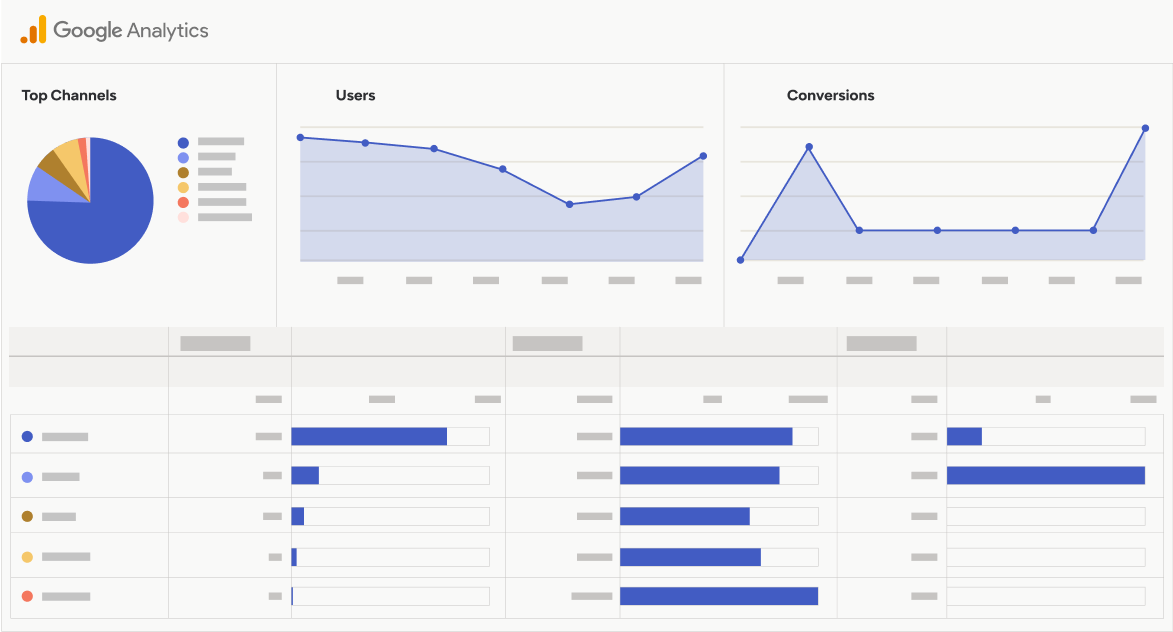When Does the Google Analytics Tracking Code Send an Event Hit to Analytics? Timing and Best Practices Explained
When Does the Google Analytics Tracking Code Send an Event Hit to Analytics? Timing and Best Practices Explained
Blog Article
Maximize Your Web Site Performance With Google Analytics Monitoring Code
In the electronic landscape, understanding individual interactions with your internet site is crucial for optimization. This critical implementation not only notifies your decisions but additionally leads the means for an extra engaging individual experience.
Comprehending Google Analytics
Recognizing Google Analytics is important for internet site owners and marketing experts intending to enhance their online visibility. This effective device provides critical understandings right into individual habits, permitting stakeholders to make data-driven decisions. By tracking different metrics, such as page sights, bounce rates, and user demographics, Google Analytics helps recognize which facets of a website are carrying out well and which call for improvement.
One of the essential features of Google Analytics is its capability to section information. Individuals can examine web traffic sources, customer interaction, and conversion prices across different sections, such as geographic places or device kinds. This granularity makes it possible for marketers to customize their methods to certain audiences, thereby enhancing the efficiency of their campaigns.

Setting Up Tracking Code
To harness the complete possibility of Google Analytics, setting up the tracking code correctly is a basic step. The monitoring code, a fragment of JavaScript, makes it possible for Google Analytics to collect data regarding user communications on your site.
Following, you'll need to install this code into the HTML of your web site. Preferably, place the tracking code right before the closing tag on every page you want to monitor. Take into consideration using plugins that facilitate very easy combination. if you're using a material monitoring system (CMS) like WordPress.
After executing the code, it's vital to validate its performance. Utilize the "Real-Time" records in Google Analytics to confirm that information is being gathered as anticipated. By ensuring proper configuration, you develop a solid foundation for reliable information evaluation and tactical decision-making to improve your web site's performance.
Key Metrics to Screen
On a regular basis keeping an eye on essential metrics in Google Analytics is important for assessing your website's efficiency and customer involvement. Among the basic metrics to track are page views, which offer understanding right into just how frequently users go to different pages on your website. Additionally, distinct visitors assist you recognize the reach of your web content by showing the number of unique users my website are engaging with your website over a provided duration.
Bounce price is one more vital statistics, revealing the percentage of visitors that leave your site after watching only one web page. A high bounce rate might signify issues with material importance or user experience. On the other hand, session period shows exactly how lengthy visitors stay on your site, assisting you determine web content effectiveness and user passion.
Conversion rates are crucial for determining the Click Here success of your website in attaining specific objectives, such as type submissions or item acquisitions (when does the google analytics tracking code send an event hit to analytics?). Monitoring web traffic resources is also crucial, as it assists recognize which channels drive one of the most traffic and conversions, enabling for more targeted marketing approaches
Studying Site Visitor Behavior

In addition, tracking individual paths via the site helps reveal usual navigating patterns. This info is important in figuring out whether individuals can quickly discover the content they seek or if they experience obstacles that bring about stress. Determining high exit pages can highlight areas that might need redesign or even more interesting content to keep site visitors.
Furthermore, segmenting individuals based on demographics, rate of interests, and actions provides a much deeper understanding of the target market. This segmentation enables services to tailor content and advertising and marketing approaches better, increasing the probability of conversions. Ultimately, examining site visitor actions not just educates website improvements yet additionally cultivates a much more user-centric approach, bring about boosted complete satisfaction and commitment over time.
Executing Data-Driven Adjustments
Implementing data-driven adjustments is essential for more information enhancing web site efficiency and accomplishing business goals. By leveraging insights gathered from Google Analytics, companies can identify areas for enhancement and make informed choices to maximize individual experience.
First, examine essential efficiency indications (KPIs) such as bounce rates, session period, and conversion prices to determine specific concerns impacting individual engagement - when does the google analytics tracking code send an event hit to analytics?. For example, a high bounce price on a touchdown web page may show that the content is not reverberating with site visitors or that the web page takes too long to lots

Final Thought
In conclusion, the execution of Google Analytics tracking code is vital for maximizing site efficiency. By accurately monitoring user actions and crucial metrics, valuable insights can be acquired, helping with data-driven decision-making.
By tracking different metrics, such as web page views, bounce rates, and user demographics, Google Analytics helps determine which aspects of a website are carrying out well and which require renovation.
Users can assess traffic resources, individual engagement, and conversion rates across different sectors, such as geographic places or device kinds. The monitoring code, a fragment of JavaScript, enables Google Analytics to accumulate information concerning user communications on your website.Regularly keeping an eye on crucial metrics in Google Analytics is crucial for analyzing your site's performance and customer engagement. By leveraging Google Analytics, site proprietors can get beneficial understandings into exactly how customers connect with their website.
Report this page